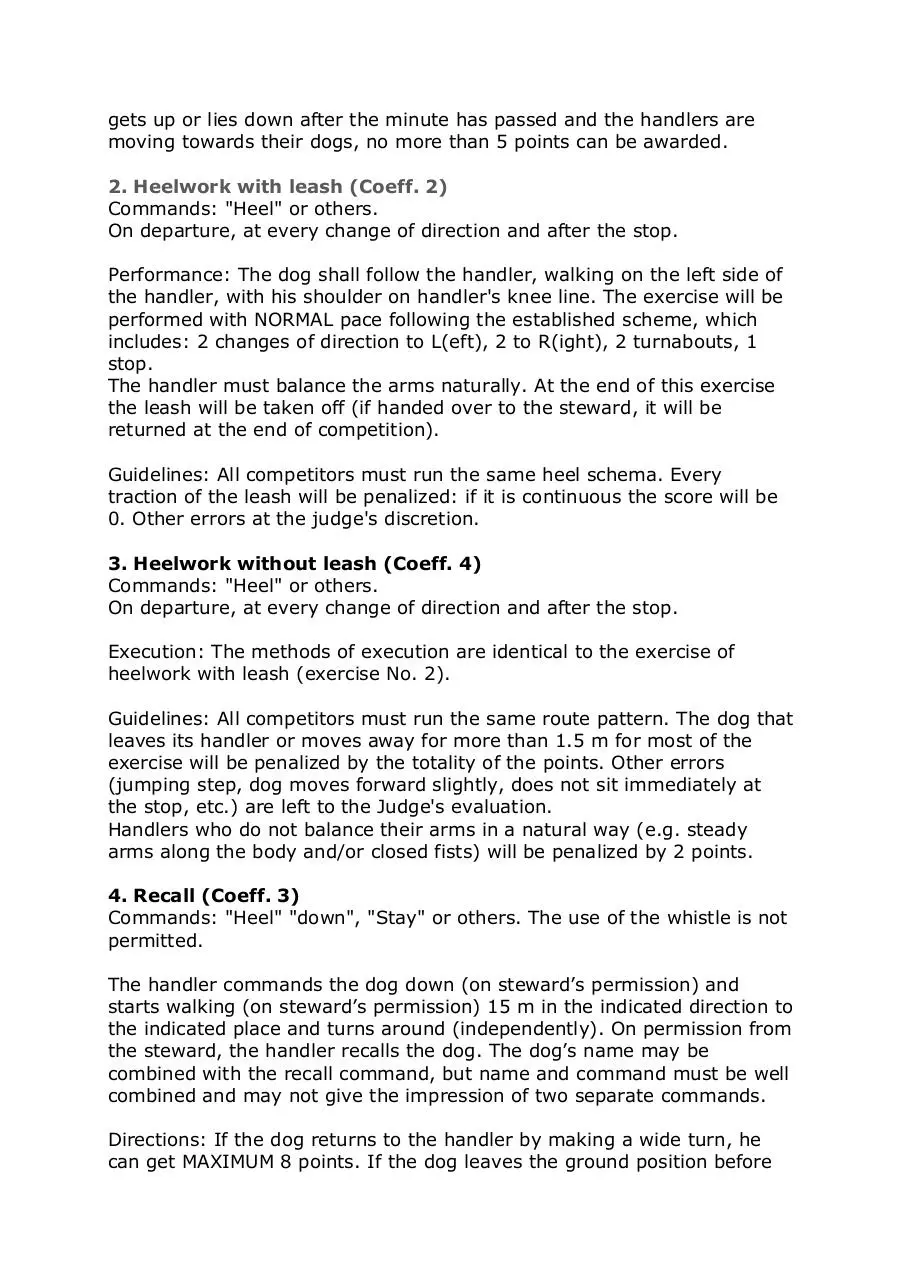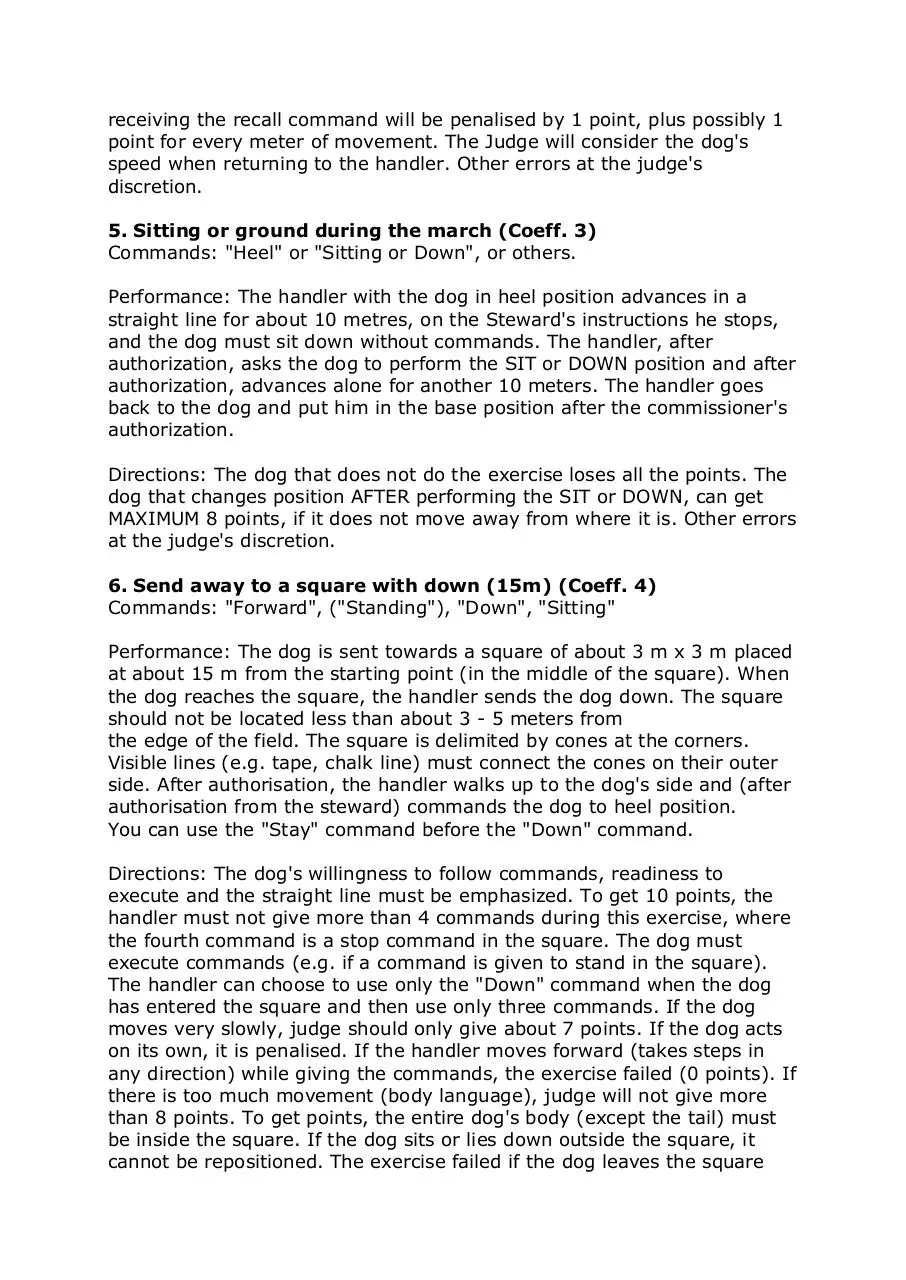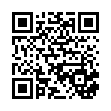Obedience Beginner Fun engl (PDF)
File information
Author: V V
This PDF 1.7 document has been generated by Microsoft® Word per Office 365, and has been sent on pdf-archive.com on 28/02/2020 at 00:05, from IP address 77.111.x.x.
The current document download page has been viewed 560 times.
File size: 147.1 KB (6 pages).
Privacy: public file





File preview
Obedience Beginner Fun-Cup Regulations
The regulation consists of three elements of the Italian, Slovenian and
Austrian regulations, as the competition is organised by the respective
countries. The aim is to organize this "ITAUSLO" (ITAly/AUStria/SLOvenia)
race every year changing between the three countries.
The general part complies with FCI regulations and where this does not
apply, the national ENCI regulations come into force.
Commands and signals with your hands
Hand signals are never allowed if the dog is next to the handler in the heel
position. This will cause a strong reduction in points, with a reduction of 24 points depending on intensity, situation and duration. If there is also
body language, the reduction is increasingly severe. In the Beginner class
these signals will only be considered as double commands.
Judging the exercises
In Beginner class 1 point should be subtracted for a second command and
the fourth command causes the exercise to fail.
If the dog relieves itself in the ring:
− during an exercise, the exercise is failed (0 points) and the general
impression is failed (0 points).
− among the exercises, the general impression failed (0 points)
Leave the field or leave the conductor
Leave the field
If the dog leaves the field being out of control, the handler can call the
dog twice. If the dog returns, they can continue with the competition, but
this will be noted in the general impression and severely penalised. The
exercise involved failed (0 points).
If the dog leaves the field one more time he is disqualified.
Leave the conductor without leaving the field
If the dog leaves the handler during an exercise or between exercises
being out of control, the handler can call the dog twice without leaving his
position. If the dog returns to the handler, they can continue with the
competition, but this will be noted in the general impression and will cause
a severe reduction in points. The exercise involved failed (0 points).
If the dog leaves the handler one more time, disqualification follows.
1. Lying in a group for 1 minutes, handlers in sight (Coeff. 4)
Commands: “Down”, “Stay”, “Sit”
Performance: The exercise starts when all handlers of the group stands
with their dogs on a leash in a row at an approximately 3 meters distance
from each other. The steward will announce the leashing of the dogs.
The steward announces, “Exercise starts”. The exercise ends when the
handlers have returned to their dogs and all dogs have taken their heel
position and the steward has announced ”Exercise over”.
The lying down on command from the heel position is performed one by
one. The dogs should be commanded to lie down from left to right and to
sit up from right to left so that the first to lie down is the last to sit up.
The steward tells when to give the command. The handlers leave their
dogs and walk about 25 m away and turn in front of the dogs. After one
minute then the handlers are told to walk up and stand beside their dogs
and told, one by one, to command their dog to heel position.
The handlers should be reminded that they are not to give their
commands too loudly. This might influence the other dogs and will result
in a strong reduction of points. There should be at least three dogs in a
group but no more than six.
Directions: The Steward announces "Take the leash off" and then "Start
the exercise", after the dogs have been taken off the leash. The exercise
starts here for all competitors in the line.
The Steward then commands the first handler to put the dog down. The
exercise ends when the handlers have returned to their dogs and all dogs
have regained their heel position and the Steward has announced
"Exercise over". A dog that does not lying down (two commands), stand
up or sit or crawl for more than the length of his body before time runs
out, does not pass the exercise (points 0). All movements will clearly
reduce the points. If the dog barks 1-2 times, 1-2 points are subtracted; if
he barks most of the time, the exercise is failed (0 points). Restlessness,
like shifting the weight from one side to the other, is penalized. The dog
can turn his head and look around and can show interest if there is any
distraction or noise on or off the field. This, however, must not give the
impression of restlessness or anxiety. If a dog gets up and approaches
another dog, so that there is a risk of a fight, the exercise must be
stopped and then started again for all dogs except the one that caused the
disturbance. If the dog reacts (down or sits) before the handler's
command (e.g. on the neighbour's "down" or "sit" command), not more
than 8 points can be awarded. If the dog has been lying or sitting down
before the command and changes position spontaneously or on command
(gets up/goes back to down), no more than 7 points can be given. No
more than 7 points can be awarded if the dog lies on its side. If the dog
gets up or lies down after the minute has passed and the handlers are
moving towards their dogs, no more than 5 points can be awarded.
2. Heelwork with leash (Coeff. 2)
Commands: "Heel" or others.
On departure, at every change of direction and after the stop.
Performance: The dog shall follow the handler, walking on the left side of
the handler, with his shoulder on handler's knee line. The exercise will be
performed with NORMAL pace following the established scheme, which
includes: 2 changes of direction to L(eft), 2 to R(ight), 2 turnabouts, 1
stop.
The handler must balance the arms naturally. At the end of this exercise
the leash will be taken off (if handed over to the steward, it will be
returned at the end of competition).
Guidelines: All competitors must run the same heel schema. Every
traction of the leash will be penalized: if it is continuous the score will be
0. Other errors at the judge's discretion.
3. Heelwork without leash (Coeff. 4)
Commands: "Heel" or others.
On departure, at every change of direction and after the stop.
Execution: The methods of execution are identical to the exercise of
heelwork with leash (exercise No. 2).
Guidelines: All competitors must run the same route pattern. The dog that
leaves its handler or moves away for more than 1.5 m for most of the
exercise will be penalized by the totality of the points. Other errors
(jumping step, dog moves forward slightly, does not sit immediately at
the stop, etc.) are left to the Judge's evaluation.
Handlers who do not balance their arms in a natural way (e.g. steady
arms along the body and/or closed fists) will be penalized by 2 points.
4. Recall (Coeff. 3)
Commands: "Heel" "down", "Stay" or others. The use of the whistle is not
permitted.
The handler commands the dog down (on steward’s permission) and
starts walking (on steward’s permission) 15 m in the indicated direction to
the indicated place and turns around (independently). On permission from
the steward, the handler recalls the dog. The dog’s name may be
combined with the recall command, but name and command must be well
combined and may not give the impression of two separate commands.
Directions: If the dog returns to the handler by making a wide turn, he
can get MAXIMUM 8 points. If the dog leaves the ground position before
receiving the recall command will be penalised by 1 point, plus possibly 1
point for every meter of movement. The Judge will consider the dog's
speed when returning to the handler. Other errors at the judge's
discretion.
5. Sitting or ground during the march (Coeff. 3)
Commands: "Heel" or "Sitting or Down", or others.
Performance: The handler with the dog in heel position advances in a
straight line for about 10 metres, on the Steward's instructions he stops,
and the dog must sit down without commands. The handler, after
authorization, asks the dog to perform the SIT or DOWN position and after
authorization, advances alone for another 10 meters. The handler goes
back to the dog and put him in the base position after the commissioner's
authorization.
Directions: The dog that does not do the exercise loses all the points. The
dog that changes position AFTER performing the SIT or DOWN, can get
MAXIMUM 8 points, if it does not move away from where it is. Other errors
at the judge's discretion.
6. Send away to a square with down (15m) (Coeff. 4)
Commands: "Forward", ("Standing"), "Down", "Sitting"
Performance: The dog is sent towards a square of about 3 m x 3 m placed
at about 15 m from the starting point (in the middle of the square). When
the dog reaches the square, the handler sends the dog down. The square
should not be located less than about 3 - 5 meters from
the edge of the field. The square is delimited by cones at the corners.
Visible lines (e.g. tape, chalk line) must connect the cones on their outer
side. After authorisation, the handler walks up to the dog's side and (after
authorisation from the steward) commands the dog to heel position.
You can use the "Stay" command before the "Down" command.
Directions: The dog's willingness to follow commands, readiness to
execute and the straight line must be emphasized. To get 10 points, the
handler must not give more than 4 commands during this exercise, where
the fourth command is a stop command in the square. The dog must
execute commands (e.g. if a command is given to stand in the square).
The handler can choose to use only the "Down" command when the dog
has entered the square and then use only three commands. If the dog
moves very slowly, judge should only give about 7 points. If the dog acts
on its own, it is penalised. If the handler moves forward (takes steps in
any direction) while giving the commands, the exercise failed (0 points). If
there is too much movement (body language), judge will not give more
than 8 points. To get points, the entire dog's body (except the tail) must
be inside the square. If the dog sits or lies down outside the square, it
cannot be repositioned. The exercise failed if the dog leaves the square
before the end of the exercise. If the dog crawls in the square, no more
than 7 points can be awarded. If the dog changes position before the
handler has reached it, not more than 6 points can be awarded. The
exercise failed if one of the Stay or Down commands must be given a third
time. The penalty for extra direction commands depends on their intensity
and the dog's willingness to execute them. No more than 8 points can be
awarded if the dog stands up or sits down before the command when the
handler is beside the dog. It is not allowed to show the dog the directions
at the starting point or show the square before the exercise. This leads to
failure of the exercise.
7. Retrieve (Coeff. 4)
Commands: "Take", or others.
Performance: At the point indicated, with the dog in the basic position, on
the Stewards's instructions, the handler will order the dog to take the
object and hold it in his mouth for at least 5 seconds. Personal items could
be used (gloves, spectacle case, etc.) or possibly a wooden or plastic or
metal dumbel. TOYS (balls or similar) are not authorized.
Directions: Dog does not take = 0 points (the dog must take the object
spontaneously). Additional commands to hold the object (max 2) = -1
point for each additional command. Chew or drop the object = -3 points.
Other errors at the judge's discretion.
8. Distance Control (Coeff. 3)
Commands: "Stay", "Down", "Sitting" and/or with gestures, "Heel" or
others.
Performance: The dog will be placed in the place indicated by the
Commissioner in the SITTING position. The handler moves away about 5
m. The Steward stands 5 metres behind the dog so that he can tell the
handler what positions the dog should take. The positions are 2, DOWN
and SIT (one time only). After making the positions, with permission, the
handler will return to the dog and, on instructions from the steward, will
command the dog in the heel position.
Directives: No position = 0 is performed. Position executed with repeated
command but before the steward has signalled to take the next position =
-2 points. Only one position = -4 points. The dog moves = -1 point every
meter. If the dog returns to the handler = 0 points. Other errors at
the judge's discretion.
9. Recall with jumping over a hurdle (Coeff. 3)
Commands: "Stay", "Come or jump", ("Heel")
Performance: The handler leaves (on command of the steward) the dog
sitting in front (2 - 4 m) of the hurdle, turns around the hurdle going to
the other side (about 2 - 4 m) and calls the dog to the jump on command
of the steward. The dog will have to jump and take the heel position. The
height of the barrier will be approximately the height of the dog at the
withers. The maximum height is, however, 50 cm.
Directions: If the dog touch the hurdle, even slightly, the maximum score
is 8. If the dog leans on the hurdle, if the hurdle is overturned or if the
dog does not jump, the exercise has failed. Other errors at the judge's
discretion.
10. General impression (Coeff. 2)
The general assessment will take several factors into account:
- Dog/conductor collaboration during the exercises.
- Pleasure that the dog derives from the work and the will to perform it.
- Temperament of the various races.
- Handler's presentation and behaviour.
OBEDIENCE BEGINNER CUP ITAUSLO
Beginner
1.
2.
3.
4.
5.
6.
7.
8.
9.
10.
1st prize
2nd prize
3rd prize
Exercise
Coeff
Lying in a group for 1 minutes, handlers in sight
4
Heelwork with leash
2
Heelwork without leash
4
Recall
3
Sit or down under march
2
Send away into a square and lying down
4
Retrieve
4
Distance control
3
Recall and jumping over a hurdle
3
General impression
2
Σ
32
256 – 320 points
80 % Excellent
224 – under 256 points
70 % Very good
192 – under 224 points
60 % Good
Download Obedience Beginner Fun engl
Obedience Beginner Fun_engl.pdf (PDF, 147.1 KB)
Download PDF
Share this file on social networks
Link to this page
Permanent link
Use the permanent link to the download page to share your document on Facebook, Twitter, LinkedIn, or directly with a contact by e-Mail, Messenger, Whatsapp, Line..
Short link
Use the short link to share your document on Twitter or by text message (SMS)
HTML Code
Copy the following HTML code to share your document on a Website or Blog
QR Code to this page

This file has been shared publicly by a user of PDF Archive.
Document ID: 0001936649.